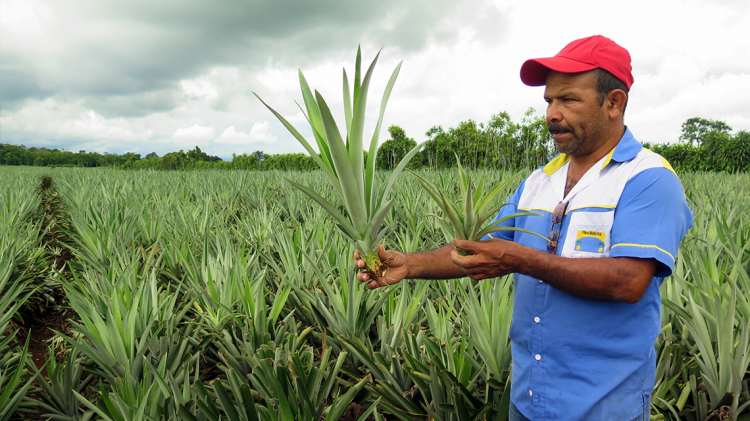While the Happy Planet Index ranks Costa Rica first in the world for environmentally-friendly practices, the country is also the world’s number one producer of fertilizer-hungry pineapples. With the help of the IAEA and the Food and Agriculture Organization of the United Nations (FAO), Costa Rican experts are exploring the use of nuclear technology to help producers grow the fruit and other crops more efficiently and ecologically. They are testing how a new type of soil additive could help reduce the use of pesticides and fertilizers as well as greenhouse gas emissions.
“Most producers apply more fertilizers and pesticides than pineapples need, and a large part of these are lost to the atmosphere as greenhouse gases or pollute rivers and groundwater,” said Cristina Chinchilla, agronomy scientist at the University of Costa Rica’s Environmental Pollution Research Centre (CICA).
CICA experts are working with the IAEA and the FAO to use biochar, a carbon-rich material fabricated from natural residues. In other parts of the world, biochar has shown that it can improve soil fertility while helping to reduce the negative impact of chemicals on the environment.
Pineapples and biochar
Costa Rica generates more than 10 million tonnes of pineapple residues as a by-product per harvest — every 18 months — so the CICA team decided to use these residues to produce biochar.
Reducing pineapple residue is especially important, Chinchilla said, because it offers a breeding ground for the stable fly, an insect pest that is devastating cattle. (To read more about the stable fly pest and how the IAEA is helping Costa Rica control it, click here).
Through an IAEA technical cooperation project that started last year, CICA experts are using nuclear derived techniques to test the benefits of biochar. They crush the pineapple plant residue to produce biochar for farmers to use on their soil. They then apply pesticides labelled with a radioactive isotope — carbon-14 (14C) — to plots of soil, which allows them to follow the pesticides’ behaviour. With this technique they can also find out if biochar helps the soil store more carbon, reducing CO2 emissions.







